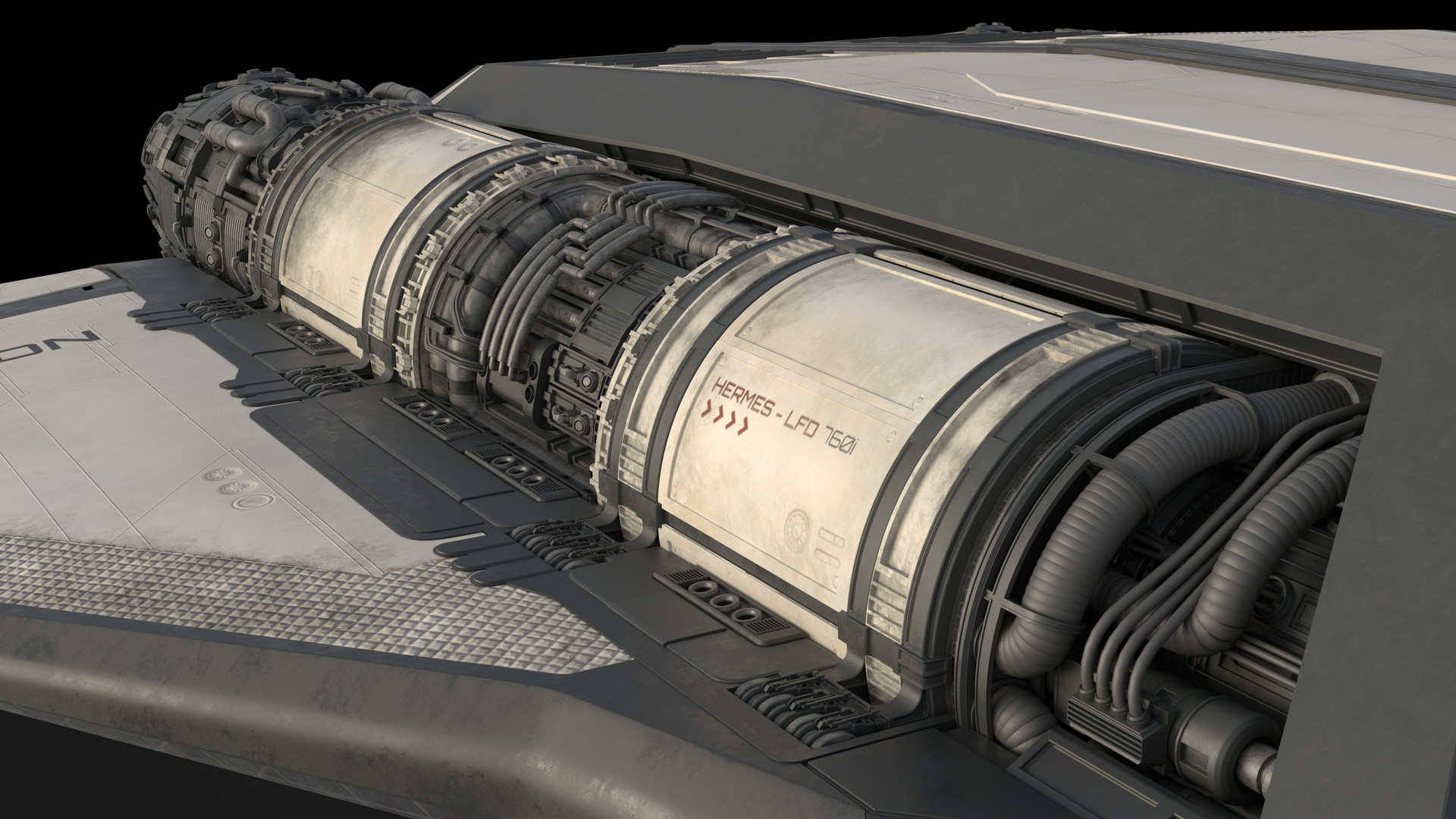Perfectly Imperfect

OUT OF CHARACTER INFORMATION
- Intent: To succeed in building my own ship engine line
- Image Source: https://www.artstation.com/artwork/EB01n
- Canon Link: Fusial Thrust Engine
- Primary Source: N/A
- Manufacturer: Eriadu Manufacturing Shipyards
- Affiliation: Closed-Market
- Models: Hermes LFD 760I
- Modularity: Engines can be upscaled to be able to succeed in propelling 1000m ships with one thruster engine.
Production: Mass-Produced
- Material: Durasteel casing and plating, Neuranium Lining, Electrum inlay, Laminasteel tubing
- Modular engine with afterburner
- Capable to work with any reactor
- Almost no heat signature [ Neuranium Lining]
- Very powerful fusial drive thrusters: compared to other fusial engines, the Hermes engine has about a 25% increase in power and capacity, allowing for smaller engines to propel bigger ships, thus saving both weight and space.
- Energy and fuel efficient: Due to the use of the newest technology researched within the company, the Hermes Fusial engines need less energy and fuel compared to similarly classed engines, allowing for more focus on things like shields and weaponry without impeding performance all to much.
- Slightly overengineered leading to relative fragility : Though the engine itself as a whole may not be perceived as fragile, its components tend to break down more and faster under stress in comparison to other engines, leading to it needing less damage to shut down in comparison to other engines.
- Very weak against slug and FLAK based weaponry.
Being the first completely in house designed engine, the Hermes series is meant to be used mainly for the civilian ship lines in the galaxy, but has some veritable use on ships that desire more efficient power use and need strong, powerful engines. Alas due to the overengineering, the Hermes series, while powerful and useful can be somewhat fragile without any added plating and is prone to breakdowns if not cared for properly.
Built within the EMS' planetary factories, the Hermes fusial engines use a mixture of both very heavy materials such as the neuranium lining as well as superlight materials such as titanium to offset each other, the use of direct energy injection, circular tubing and internal cooling and heating components rather than relying on friction , made these engines very efficient, but also fragile in comparison to other engines within the fusial engine class. Luckily th engines also proved to be very good when it came to their overall power output in relation to their size, because of this, EMS was able to design not just a single size, but came up with multiple sizes to allow for a wide range of ships to be able to use the Hermes engine at a minimal cost.








